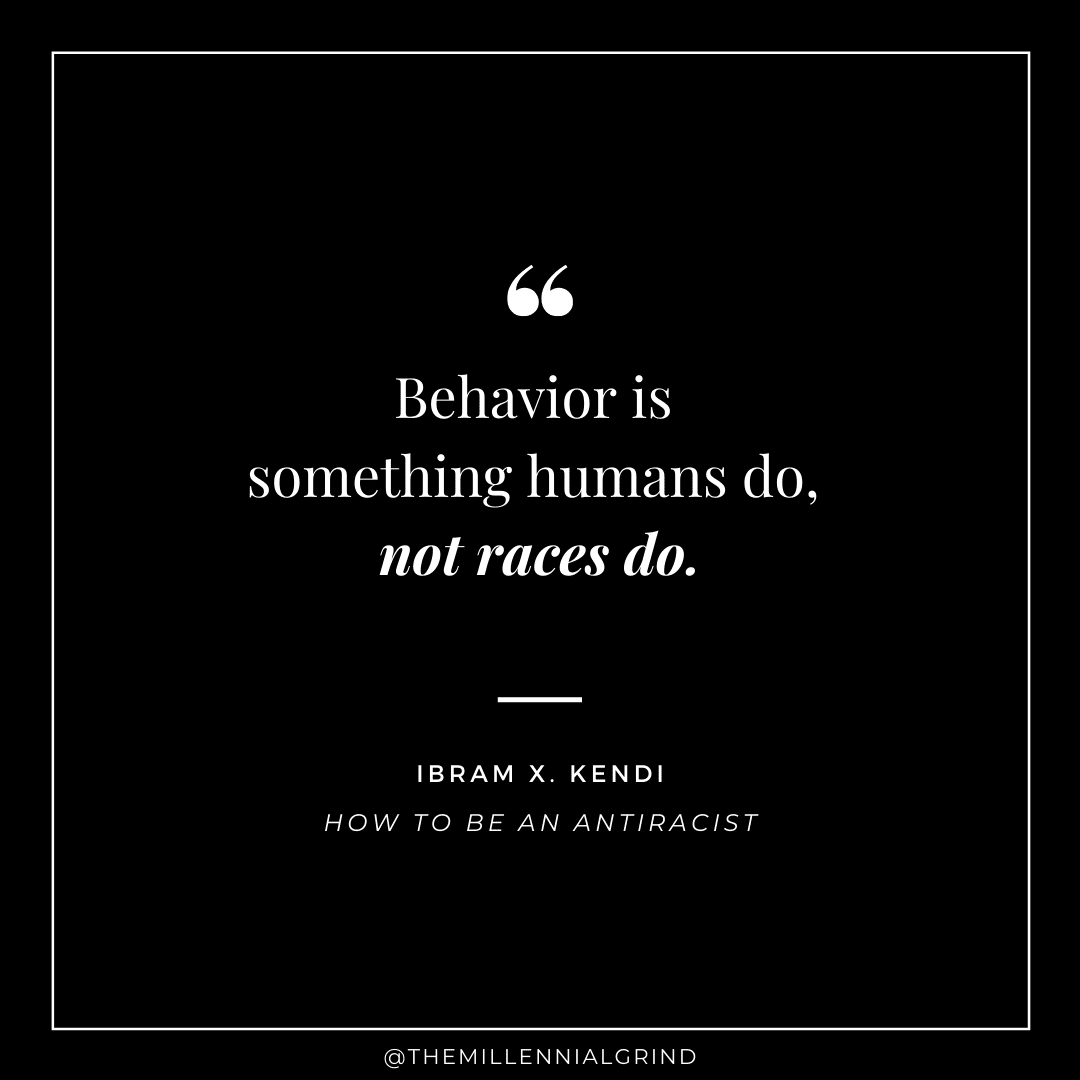In How to Be an Antiracist, Kendi takes readers through a widening circle of antiracist ideas—from the most basic concepts to visionary possibilities—that will help readers see all forms of racism clearly, understand their poisonous consequences, and work to oppose them in our systems and in ourselves.
Kendi weaves an electrifying combination of ethics, history, law, and science with his own personal story of awakening to antiracism.
This is an essential work for anyone who wants to go beyond the awareness of racism to the next step: contributing to the formation of a just and equitable society.
Keep scrolling to read 30 Powerful Quotes from How to Be an Antiracist by Ibram X. Kendi.
Get The Book: How to Be an Antiracist by Ibram X. Kendi available now on Amazon.
Related Article: 10 Best Books On Anti-Racism
30 Quotes from How to Be an Antiracist by Ibram X. Kendi
-
The opposite of racist isn’t “not racist”. It is “anti-racist”.

-
What’s the difference? One endorses either the idea of a racial hierarchy as a racist, or racial equality as an anti-racist.
-
One either believes problems are rooted in groups of people, as a racist or locates the roots of problems in power and policies, as an anti-racist.
-
One either allows racial inequities to persevere, as a racist, or confronts racial inequities, as an anti-racist. There is no in-between safe space of “not racist”.
-
What’s the problem with being “not racist”? It is a claim that signifies neutrality: “I am not a racist, but neither am I aggressively against racism.”
-
There is no neutrality in the racism struggle. The opposite of “racist” isn’t “not racist.” It is “antiracist”.
-
The claim of “not racist” neutrality is a mask for racism.
-
The good news is that racist and antiracist are not fixed identities. We can be a racist one minute and an antiracist the next. What we say about race, what we do about race, in each moment, determines what — not who — we are.
-
Black people are apparently responsible for calming the fears of violent cops in the way women are supposedly responsible for calming the sexual desires of male rapists.
-
Racist ideas love believers, not thinkers.

-
Americans have long been trained to see the deficiencies of people rather than policy.
-
Like fighting an addiction, being an antiracist requires persistent self-awareness, constant self-criticism, and regular self-examination.
-
Denial is the heartbeat of racism, beating across ideologies, races, and nations.
-
We were unarmed, but we knew that blackness armed us, even though we had no guns.
-
Assimilationist ideas are racist ideas. Assimilationists can position any racial group as the superior standard that another racial group should be measuring themselves against, the benchmark they should be trying to reach.
-
The only way to undo racism is to consistently identify and describe it—and then dismantle it.
-
“Institutional racism” and “structural racism” and “systemic racism” are redundant. Racism itself is institutional, structural, and systemic.
-
To be antiracist is to think nothing is behaviorally wrong or right- inferior or superior- with any of the racial groups.
-
To be antiracist is to deracialize behavior, to remove the tattooed stereotype from every racialized body.
-
Behavior is something humans do, not races do.

-
The idea that Black languages outside Africa are broken is as culturally racist as the idea that languages inside Europe are fixed.
-
No one becomes racist or antiracist. We can only strive to be one or the other.
-
What if we realized the best way to ensure an effective educational system is not by standardizing our curricula and tests but by standardizing the opportunities available to all students?
-
To be antiracist is to view national and transnational ethnic groups as equal in all their differences.
-
To be antiracist is to challenge the racist policies that plague racialized ethnic groups across the world.
-
To be antiracist is to view the inequities between all racialized ethnic groups as a problem of policy.
-
Culture defines a group tradition that a particular racial group might share but that is not shared among all individuals in that racial group or among all racial groups.
-
Every policy in every institution in every community in every nation is producing or sustaining either racial inequity or equity between racial groups.
-
Every single person actually has the power to protest racist and antiracist policies, to advance them, or, in some small way, to stall them.
-
Individual behaviors can shape the success of individuals. But policies determine the success of groups. And it is racist power that creates the policies that cause racial inequities.

Which quote from How to Be an Antiracist by Ibram X. Kendi is your favorite?
READ NEXT: 30 Quotes From Uncomfortable Conversations With a Black Man by Emmanuel Acho